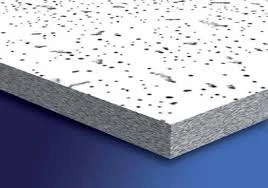Dec . 11, 2024 10:01 Back to list
Understanding Ceiling Grids and Their Importance in Modern Interior Design
Understanding Ceiling Grids An Overview
Ceiling grids are an essential architectural and design feature used in various commercial and residential environments. They serve both functional and aesthetic purposes. This article aims to provide an in-depth understanding of what ceiling grids are, their types, benefits, and applications.
What is a Ceiling Grid?
A ceiling grid, often referred to as a suspended or drop ceiling, is a framework of metal or other materials that supports ceiling tiles or panels. The grid system allows for the installation of electrical wiring, plumbing, and HVAC (heating, ventilation, and air conditioning) systems without compromising the aesthetics of a room. Typically, the grid consists of main runners that run perpendicular to the ceiling joists and cross tees that connect to create a rectangular framework.
Types of Ceiling Grids
There are several types of ceiling grids, each tailored to specific needs and environments
1. Acoustic Ceiling Grids These grids are primarily used in commercial buildings where noise reduction is essential. The ceiling tiles can absorb sound, making them ideal for offices, schools, and hospitals.
2. Metal Ceiling Grids Made from steel or aluminum, these grids are highly durable and often used in industrial settings. They can support heavier tiles and are resistant to moisture and corrosion.
3. Plastic Ceiling Grids These grids offer a lightweight and cost-effective option for residential settings. They are easy to install and can come in various colors and styles.
4. Wood Ceiling Grids Wood grids offer a more aesthetic appeal, adding a warm, rustic charm to spaces like restaurants or boutique hotels. They are less common but distinctly enhance visual interest.
Benefits of Ceiling Grids
what is a ceiling grid

Ceiling grids offer numerous advantages that make them a popular choice in construction and design. Some of the key benefits include
- Ease of Installation Ceiling grids are relatively straightforward to install, allowing for quick renovations and updates to existing spaces. This is particularly beneficial in commercial settings where time is of the essence.
- Accessibility The suspended nature of a ceiling grid allows for easy access to mechanical systems. Maintenance personnel can quickly reach plumbing, electrical, or HVAC components without extensive ceiling demolition.
- Versatility in Design Ceiling grids come in a variety of styles, colors, and materials, allowing designers to create customized looks that complement the overall aesthetic of a space. This versatility makes them suitable for both formal and casual environments.
- Energy Efficiency Certain grid systems can support energy-efficient lighting and insulation, reducing energy costs and enhancing comfort in residential and commercial buildings.
- Noise Reduction Many ceiling tiles used with grid systems are designed to absorb sound, making them ideal for environments that require quietness.
Applications of Ceiling Grids
Ceiling grids can be found in a wide range of settings. In commercial buildings, they are commonly used in offices, schools, hospitals, and retail spaces. In residential settings, ceiling grids are often utilized in basements, recreation rooms, and home theaters. The flexibility of ceiling grid systems allows them to be used in any environment where the ceiling height must be modified or where access to utilities is crucial.
Conclusion
Ceiling grids represent a significant aspect of modern architecture and design. They not only provide functional solutions for managing utilities and creating acoustic comfort but also enhance the overall aesthetics of a space. Understanding the different types, benefits, and applications of ceiling grids can help homeowners and designers make informed decisions that contribute to the functionality and beauty of their environments. Whether in a bustling office or a cozy home, ceiling grids play a vital role in shaping our indoor experiences.
-
Quality Ceiling Trap Doors & Access Panels | Easy & Secure AccessNewsAug.30,2025
-
Durable Ceiling T Grid Systems | Easy InstallationNewsAug.29,2025
-
PVC Gypsum Ceiling: Durable, Laminated Tiles for Modern SpacesNewsAug.28,2025
-
Pvc Gypsum Ceiling Is DurableNewsAug.21,2025
-
Mineral Fiber Board Is DurableNewsAug.21,2025
-
Ceiling Tile Clip Reusable DesignNewsAug.21,2025







